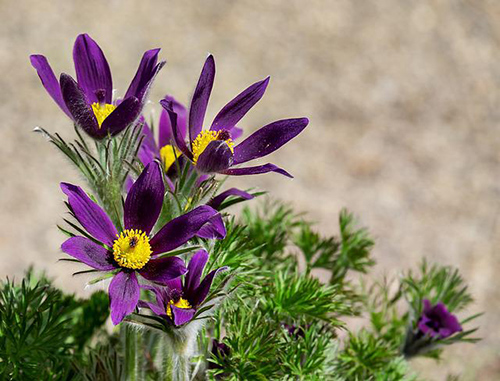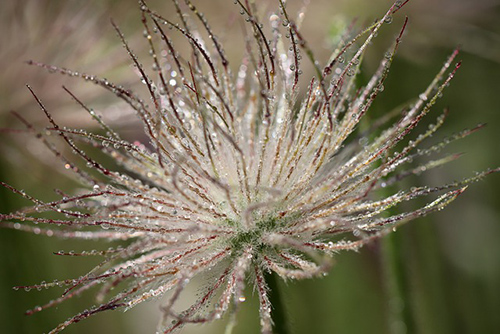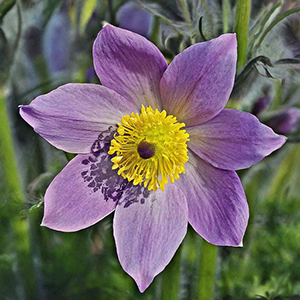Contents
When the pasque flower is dry, the plant’s fruit forms a feathery bouquet that the wind blows away. The plant’s scientific name, Anemone, is derived from this fact since the Greek word refers to a flower that opens with the gentlest breeze.

Pasque Flower Scientific Facts
- Scientific name – Pulsatilla vulgaris Miller.
- Other names include European pasque flowers, Easter flowers, meadow anemones, wild crocus, and windflowers.
- French – Pulsatille.
- Spanish – Pulsatilla.
- Environment – Seldom found; it grows in forests or dry meadows on calcareous soils of Central and Southern Europe.
- Description—This herbaceous, hairy plant of the Ranunculaceae family grows from 20 to 40 cm high. It has delicate, very divided leaves and large, purple or violet flowers with six sepals.
- Parts of the plant used medicinally – The flowers, leaves, and roots.
Healing Properties

When fresh, the pasque flower contains anemonin, irritating the skin and mucosa. The plant also has antispasmodic, emmenagogue, antibiotic, and antimitotic (inhibiting cells’ reproduction) properties. It also contains small amounts of saponins and tannins.
- Sedative – Pasque flower extract was used in ancient times as a sedative for spasmodic cough (whooping cough) and digestive colic to fight insomnia.
- Dysmenorrhea (painful menstruation) – This is its most crucial current application, and also for scanty menstruation. It makes the pain disappear and balances the menstrual cycle.
- Ovarian insufficiency – It has been proven that the pasque flower stimulates ovarian function, especially regarding folliculin (a hormone) secretion, though now this plant produces this action is not known. It is recommended for ovary functional insufficiency and sterility.

Warning
When fresh, this plant is very poisonous, but when dried or in the form of extract, it lacks any toxicity.
How to use Pasque Flower
Pasque flower must only be taken in one of the following ways:
- Extract – The dose is 0.05 – 0.3 grams per day.
- Root powder – The dose is 1-3 grams per day.
DISCLAIMER: All content on this website is presented solely for educational and informational objectives. Do not rely on the information provided as a replacement for advice, diagnosis, or treatment from a qualified medical expert. If you are pregnant, nursing, or have any preexisting medical concerns, talk to your doctor before using any herbal or natural medicines.
REFERENCES
- George D. Pamplona-Roger, M.D. “Encyclopedia of Medicinal Plants.” George D. Pamplona-Roger, M.D. Encyclopedia of Medicinal Plants. Ed. Francesc X. Gelabert. vols. 2 San Fernando de Henares: Editorial Safeliz, 2000. 623. Print.
- Drugs.com: https://www.drugs.com/npp/pasque-flower.html
